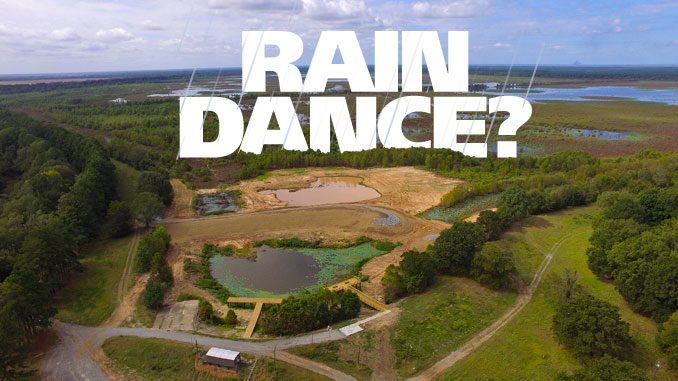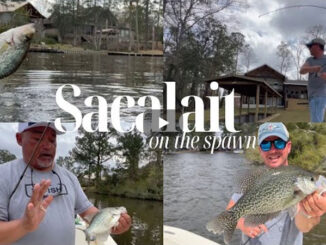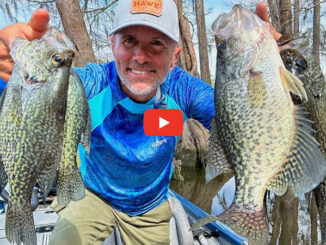
Wet weather helping renovated Bussey Brake inch closer to reopening after 7-year project
Heavy spring rains in northeast Louisiana were not welcomed by everybody, especially turkey hunters and farmers. But fishermen hoping to see the “new” Bussey Brake Reservoir begin filling with water didn’t mind.
There is no natural water flow into the lake, so it must be filled by rainwater and through pumping from Bayou Bartholomew.
Bussey Brake is a 2,200 acre, man-made water-supply reservoir in Morehouse Parish that was given to the Louisiana Department of Wildlife and Fisheries by International Paper in 2012. It’s 60 years old, but recent renovations, including draining the lake and restocking, is making the lake like new. The lake was 90% drained in 2013, and work on improvements and eliminating an overabundance of trash fish began. The LDWF used rotenone to kill the remaining rough fish and began restocking shortly thereafter the deep areas of the lake and sloughs that still held some water.
Physical improvements have been completed, and the LDWF and anglers are waiting for enough water to make it safe.

“We will open the reservoir as soon as we deem it safe for boat traffic and for the good of the reservoir,” said Ryan Daniels, who is overseeing the project for the LDWF. “We can’t give an exact date, because there are so many variables, but the good thing is, when it does open, there will be catchable fish. We’ve been restocking as much as we can, as we go, over the past several years.”
Fish stockings
Fish have been stocked since early 2017, including 300 adult Florida-strain largemouth bass. Multiple stockings of both Florida and northern bass fingerlings, redear sunfish, bluegill, black and white crappie and threadfin shad have been done. Stocking will be continued as long as necessary.
There is a new pier next to the boat ramp to allow anglers to tie up their boats while loading and unloading. A new, handicap-accessible fishing pier in the same area has been built. An earthen wave break constructed out from the ramp will protect the launching area from big waves — a problem in years past.
Much of the lake has new growth, including grasses, cypress trees and other bushes that will provide excellent cover to protect the fisheries food chain. One of the problems with the “old” Bussey, besides trash fish, was that most of the lake’s fish-friendly structure had rotted, silted in or otherwise disappeared over time.
Boat lanes have been constructed on both the east and west sides of the lake, with spoil banks created in some areas to improve aesthetics, help mark the lanes and provide additional fish habitat. There is no large standing timber in the lake.
The new electric pump that is being used to fill the reservoir was installed in late 2019.
It’s important to note how the project is being paid for. International Paper donated the property, valued at more than $4 million dollars, eight years ago. The majority of funding has come from the federal Sport Fish Restoration program, which is funded by special excise taxes and license fees paid for sportsmen.
A new start
Bussey has also been deemed a Wildlife Management Area, operated by the LDWF’s Fisheries Division. Daniels said LDWF is planning to develop and enact special creel limits — and possibly size limits — for the lake, especially while it is new, to maintain a high-quality fishery. WMA-specific regulations will also be in play, so anglers fishing it when it opens will need to pay attention.

Leaders from the Bastrop community are hoping that the reopening of the lake will be a boost to the area’s economy, similar to what it was back in the 1960s. A report on an opening day on the lake in 1960 showed 446 fishermen were checked with 4,400 fish brought to the main dock. Results for the first year the lake was open showed that 60,000 fishermen visited the lake, spent 220,000 man hours and caught more than 200,000 pounds of fish. Resident fishing licenses in the parish increased from 1,700 in 1959 to 2,700 the year the lake opened.
It was also reported by one sporting goods store that “24,000 shiners, 38,000 crickets, 500 boxes of red worms and more than 3,000 artificial lures” were sold during the first week of Bussey’s opening. No outboard motors were allowed withe lake first opened, only boats propelled by electric trolling motors.
When the lake is reopened, there will be no duck hunting for the time being. It will be open for fishing 24 hours a day, seven days a week, with no restrictions on boat or motor sizes. No ATVs or jet skis will be allowed, and no camping allowed will be allowed.


